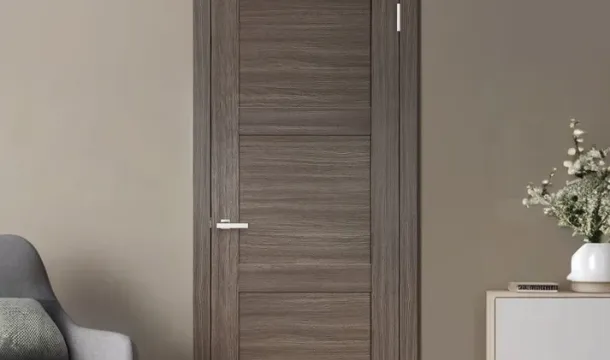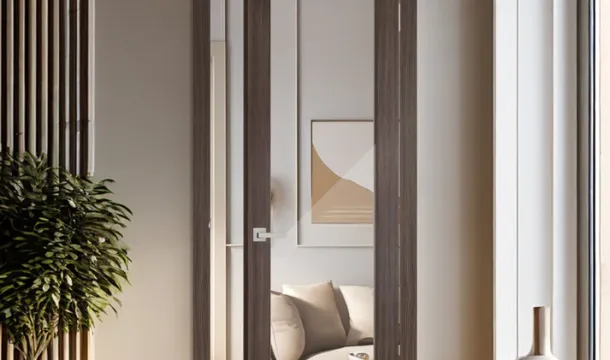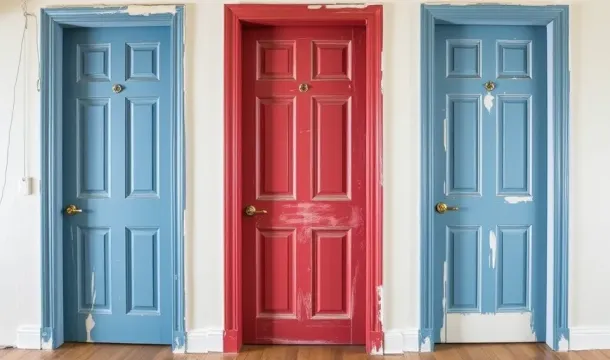Using Bold Colors on Interior Doors Without Overwhelming Your Room
Popular Articles
- Choosing the Perfect Interior Doors for Your Canadian Home
- A Complete Guide to Choosing Interior Doors for Canadian Homes
- The Challenges of Painting Interior Doors
- Understanding Interior Doors and Their Role in Your Home
- The Perfect Blend of Reliability and Design: Interior Doors with Italian "Sandwich" Technology
Choose the right shade by balancing intensity with room size and natural light. Deep hues like navy or forest green work well in spacious areas with ample daylight, while saturated reds or mustard yellows can energize smaller rooms if used sparingly. Avoid overly bright tones in compact spaces lacking windows to prevent visual clutter.
Anchor bold doors with neutral walls and minimalist decor. Pairing a vividly colored door with whites, grays, or muted earth tones creates contrast that highlights the door without competing for attention. Keep surrounding furnishings simple and streamlined to maintain visual harmony.
Incorporate complementary accents to tie the color into the room's palette. Use throw pillows, rugs, or artwork featuring shades from the door's color family to create cohesion. This technique prevents the door from feeling out of place and strengthens overall design unity.
Choosing Complementary Bold Shades
Select bold colors that harmonize by pairing hues opposite each other on the color wheel, such as deep teal with burnt orange or mustard yellow with navy blue. This approach creates a balanced contrast that energizes the door without clashing with surrounding elements.
Consider the undertones of your room's existing palette when selecting bold shades. For instance, if your walls have cool undertones like gray or blue, opt for warm complementary door colors like rich coral or marigold to add warmth and depth without overwhelming the space.
Use muted variations of bold colors to maintain vibrancy while reducing visual intensity. A saturated emerald green door works beautifully next to soft beige walls, providing a striking focal point that feels intentional and grounded rather than overpowering.
Test small samples of paint in different lighting conditions throughout the day. Natural light enhances true color tones, while artificial lighting can shift perception significantly. Choosing complementary shades that adapt well ensures the bold door remains appealing under diverse lighting.
Incorporate subtle accents from your chosen door color into adjacent decor itemssuch as cushions, rugs, or artworkto create cohesion. This repetition reinforces the complementary scheme and integrates the bold shade seamlessly into the overall design.
Balancing Door Color With Decor
Anchor bold door colors by repeating subtle accents of the same hue throughout your room. For instance, if your door is painted a striking mustard yellow, integrate cushions, artwork frames, or vases in similar shades to create cohesion without overwhelming the space.
Use neutral tones strategically around the door to ground its intensity. Walls in soft grays, warm beiges, or crisp whites provide breathing room and prevent visual fatigue. Avoid placing bold-colored furniture immediately adjacent to the door; instead, opt for pieces in muted colors that complement but don't compete.
Texture and Material Play
Incorporate varied textures near the door to soften strong color contrasts. A woven rug, linen curtains, or wood accents can diffuse visual impact while maintaining balance. Matte finishes on doors reduce glare and help blend bold colors naturally with other elements.
Proportion and Placement
Consider the size of your door relative to the room. In smaller spaces, choose deep jewel tones like emerald or navy rather than neon shades to maintain depth without shrinking the area visually. Positioning the door where it interacts with lighter walls or reflective surfaces enhances spatial flow and eases color transitions.
Controlling Visual Impact Strategically
Limit the bold door color's reach by confining it to a single focal point within the room. Avoid painting adjacent moldings or trim in the same hue to prevent visual saturation. Instead, use neutral or muted tones on surrounding surfaces to create contrast that sharpens the door's presence without competing for attention.
Implement lighting that enhances the door's color while controlling glare and shadows. Directional spotlights or wall sconces aimed at the door can intensify its depth and texture, making the bold color feel intentional rather than overpowering. Conversely, dimmer ambient lighting reduces the risk of overwhelming brightness in smaller spaces.
Layering with Texture and Materials
Introduce subtle textures near the doorsuch as matte finishes, wood grain, or soft fabricsto break up flat expanses of bold color. A high-gloss finish on a brightly colored door can appear more aggressive; opting for satin or eggshell sheens tempers intensity while maintaining vibrancy.
Pairing a bold-colored door with tactile elements like woven rugs or natural fiber cushions nearby creates visual balance through material contrast. This layered approach prevents the color from dominating by adding sensory complexity that draws attention evenly across the space.
Spatial Positioning and Scale Considerations
Position doors with intense colors in areas where they won't directly compete with other strong design features. For example, a vivid red door works well on an entryway facing a plain hallway rather than opposite a large statement artwork. Assess room size: in compact rooms, reduce door saturation by mixing in lighter wall tones and reflective surfaces to visually expand space.
The scale of the door relative to surrounding furniture also impacts perception. Oversized doors painted boldly can overwhelm modest furnishings; choosing proportionate hardware and trim minimizes imbalance. Strategic placement combined with scaled elements ensures bold colors enhance rather than dominate interior flow.
Popular Articles
- Choosing the Perfect Interior Doors for Your Canadian Home
- A Complete Guide to Choosing Interior Doors for Canadian Homes
- The Challenges of Painting Interior Doors
- Understanding Interior Doors and Their Role in Your Home
- The Perfect Blend of Reliability and Design: Interior Doors with Italian "Sandwich" Technology

Choosing the Perfect Interior Doors for Your Canadian Home

A Complete Guide to Choosing Interior Doors for Canadian Homes
